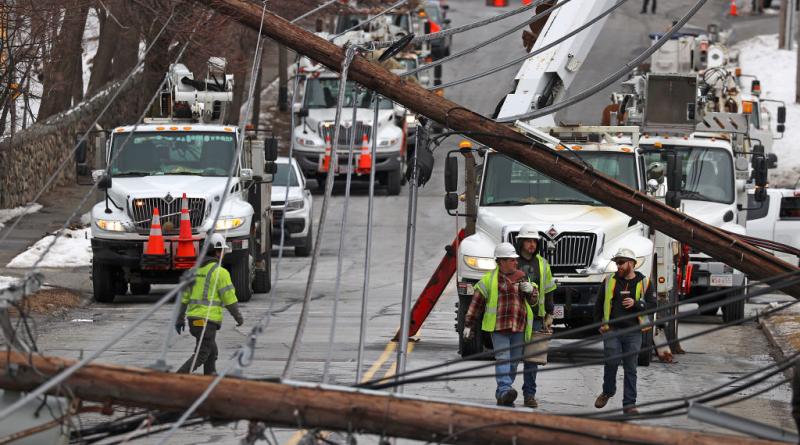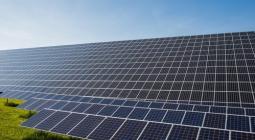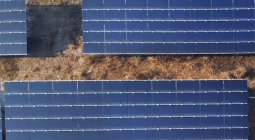Microgrids Can Bolster Creaky Electricity Systems, But Most States Do Little to Encourage Their Development

A state report card shows missed opportunities for technologies that are ready for deployment.
An August wildfire cut off electricity to Del Norte County, California. Residents might have been in the dark for weeks—except for the use of a makeshift microgrid that generated power locally.
The diesel generators wouldn’t be confused with clean energy, and the thrown-together nature of the effort was far from a permanent installation. But the situation in this northwest California county highlights how microgrids could and should be an important part of our energy landscape.
And, with some planning, microgrids could be generating clean energy.
The case for microgrids is clear, but companies that try to develop the projects have run into a discouraging array of obstacles, as shown in a recent report from Think Microgrid, a trade group for companies involved with these technologies.
The report, which includes a state-by-state report card, explains that much of the country has little support for microgrids, but I think the authors pulled their punches in their criticism of the places with some of the most problems.
But before we go on, I need to answer a basic question: What is a microgrid?
A microgrid is a localized energy system that can operate in conjunction with the larger grid or independent of it. Examples may include systems that serve housing developments, military bases, school campuses and medical complexes.
Clean energy advocates tend to focus on microgrids that use rooftop solar combined with battery storage. But microgrids also can run on fossil fuels, or a mix of resources.
Microgrids are here already, with several thousand U.S. projects, including 329 completed last year, according to the research firm Wood Mackenzie. The operational projects have about 8 gigawatts of capacity and another 2.5 gigawatts are in some phase of development. Texas, California, Florida and Alaska are among the states with the most projects.
No states got “A” grades and none got “F” grades in the report. The leaders, with “B” grades, are Colorado, Connecticut, Hawaii and Texas. Sixteen states got “C” grades, including California. The rest—a majority of states—got “D” grades.
California stands out for me, since it leads the country in rooftop solar and battery storage and is home to many companies that install these resources. The state also has a severely strained grid and reliability concerns related to wildfires.
This environment is practically begging for microgrids.
But some high-profile attempts to build microgrids in California have been rejected by regulators, often due to opposition from utilities or utility-friendly groups. Inside Climate News wrote about one example this year in which the rooftop solar company Sunnova applied to be certified as a “micro utility” so it could work with builders on housing developments that would produce their own electricity and be able to operate on their own when the regional grid wasn’t working.
The California Public Utilities Commission rejected the application, saying Sunnova didn’t provide enough details, and critics of the plan said Sunnova was ill-equipped to oversee a utility-like framework.
I asked Cameron Brooks, Think Microgrid’s executive director, how to make sense of California being a leader in clean energy but falling short when it comes to microgrids.
“It’s very true that California has done a lot about clean energy, about carbon reduction overall, and energy efficiency, and most of those have been done, I would say, at the bulk power level,” he said. “That’s all good and there’s nothing wrong with that, but it does not address the unique challenges of what it takes to integrate distributed energy and take advantage of that, and that’s an area that I think California is really falling down.”
When he talks about distributed energy, he means customer-owned resources like rooftop solar and battery storage.
If Del Norte County had developed microgrid projects before the August fire and power outage, it could have saved on the expense and emissions of using diesel generators. The Los Angeles Times wrote about the outage and the response, including that each generator used about 47,000 gallons of diesel every 24 hours.
Photo: David L. Ryan/The Boston Globe via Getty Images - Stoneham, MA - March 1: Emergency personnel dot Montvale Avenue in Stoneham, Mass., after downed power lines trapped cars and trucks.





